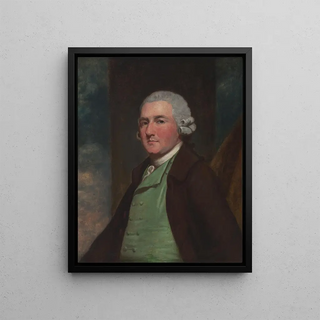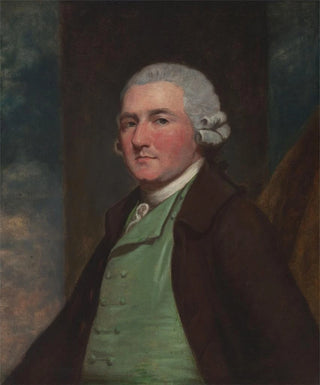Art print | A man called M. Cross - George Romney


View from behind

Frame (optional)
In the fascinating universe of 18th-century painting, the art print "Un homme appelé M. Cross" by George Romney stands out for its elegance and psychological depth. This portrait, which captures the very essence of its subject, evokes a silent dialogue between the viewer and the depicted character. Through this work, Romney invites us to delve into a period where the portrait was not limited to a simple physical representation but became a window into the human soul. M. Cross's penetrating gaze, combined with subtle gestures, creates an intimate atmosphere that fascinates and questions.
Style and uniqueness of the art print
George Romney's style is characterized by an exceptional mastery of light and color. In "Un homme appelé M. Cross," he succeeds in capturing not only the appearance of his subject but also his character and social status. The chosen palette, with its rich and nuanced tones, gives this art print a warmth and depth that transcend a mere portrait. The meticulous details, from the folds of the clothing to the nuances of the complexion, testify to a concern for realism that is the artist's hallmark. Romney, influenced by the great masters of painting, manages to combine tradition and innovation, offering a unique vision of his era. The neutral background allows the focus to remain on M. Cross, enhancing the emotional impact of the composition.
The artist and his influence
George Romney, born in 1734 in Dalton-in-Furness, is one of the most prominent portraitists of his time. His artistic journey led him to London, where he built a solid reputation among the social and artistic elite. Influences from Italian painting, notably those of Raphael and Titian, blend with his personal style, creating an inimitable signature. Romney does not merely reproduce the conventions of his era; he reinvents them, incorporating a romantic sensibility that prefigures future artistic movements. His work, rich in portraits of influential personalities, reflects a time of great change, where the individual and their image take center stage. Through his portraits, he manages to immortalize not only faces but also stories and

Matte finish

View from behind

Frame (optional)
In the fascinating universe of 18th-century painting, the art print "Un homme appelé M. Cross" by George Romney stands out for its elegance and psychological depth. This portrait, which captures the very essence of its subject, evokes a silent dialogue between the viewer and the depicted character. Through this work, Romney invites us to delve into a period where the portrait was not limited to a simple physical representation but became a window into the human soul. M. Cross's penetrating gaze, combined with subtle gestures, creates an intimate atmosphere that fascinates and questions.
Style and uniqueness of the art print
George Romney's style is characterized by an exceptional mastery of light and color. In "Un homme appelé M. Cross," he succeeds in capturing not only the appearance of his subject but also his character and social status. The chosen palette, with its rich and nuanced tones, gives this art print a warmth and depth that transcend a mere portrait. The meticulous details, from the folds of the clothing to the nuances of the complexion, testify to a concern for realism that is the artist's hallmark. Romney, influenced by the great masters of painting, manages to combine tradition and innovation, offering a unique vision of his era. The neutral background allows the focus to remain on M. Cross, enhancing the emotional impact of the composition.
The artist and his influence
George Romney, born in 1734 in Dalton-in-Furness, is one of the most prominent portraitists of his time. His artistic journey led him to London, where he built a solid reputation among the social and artistic elite. Influences from Italian painting, notably those of Raphael and Titian, blend with his personal style, creating an inimitable signature. Romney does not merely reproduce the conventions of his era; he reinvents them, incorporating a romantic sensibility that prefigures future artistic movements. His work, rich in portraits of influential personalities, reflects a time of great change, where the individual and their image take center stage. Through his portraits, he manages to immortalize not only faces but also stories and






